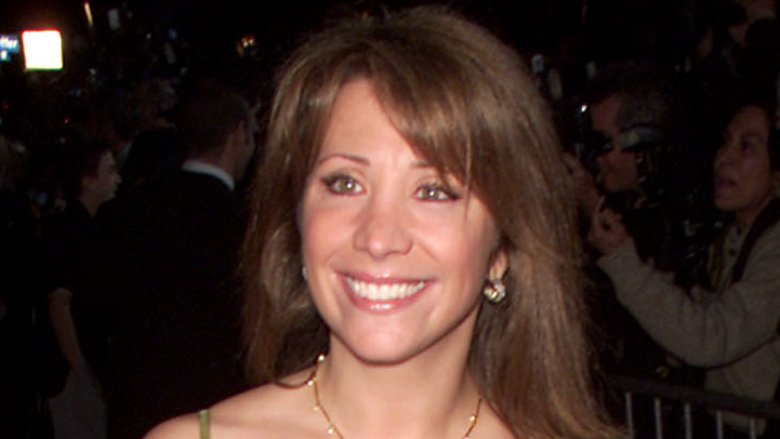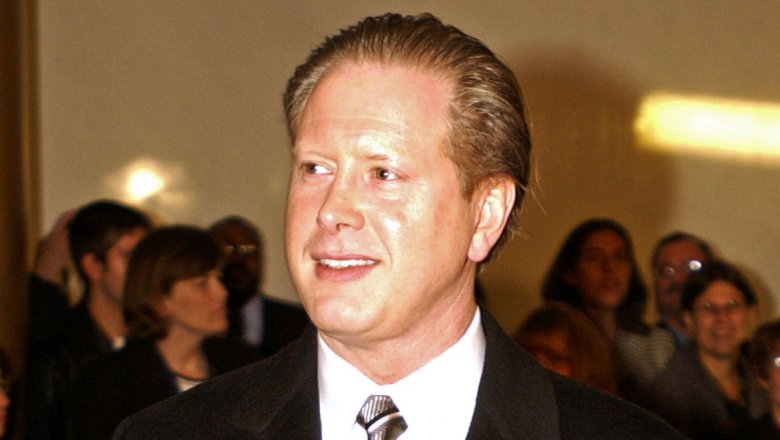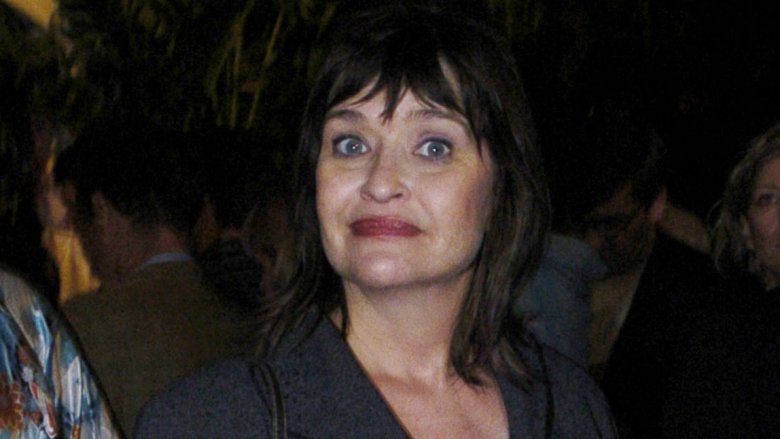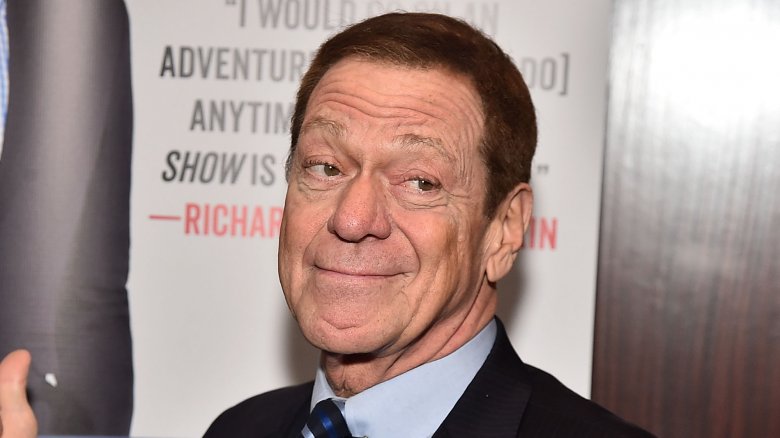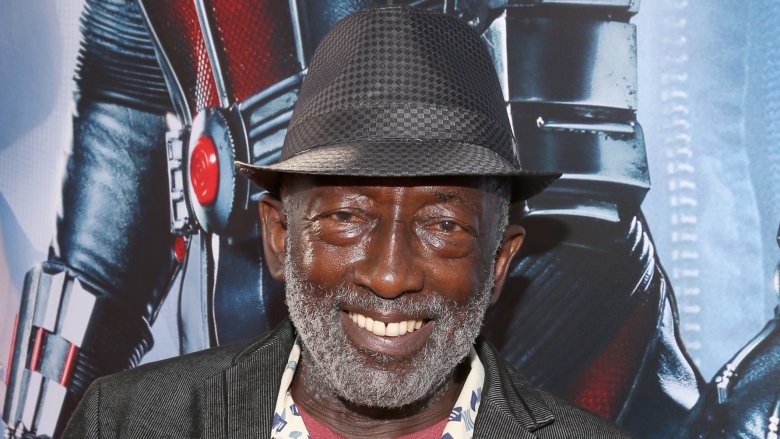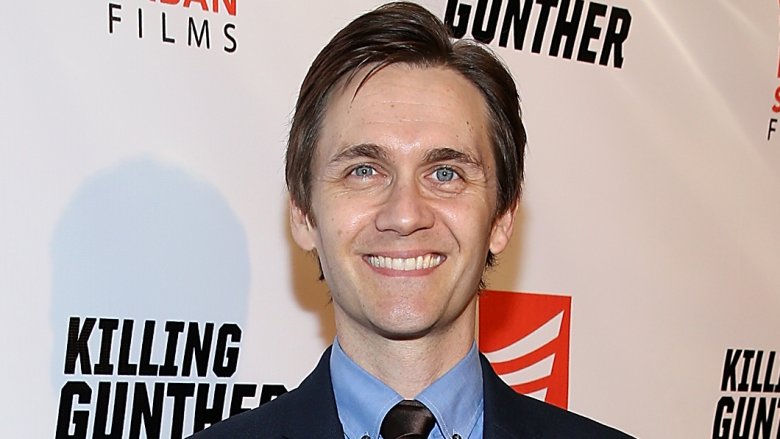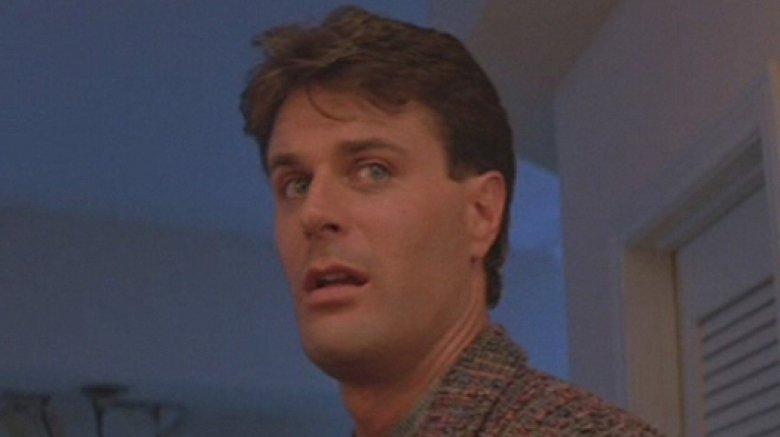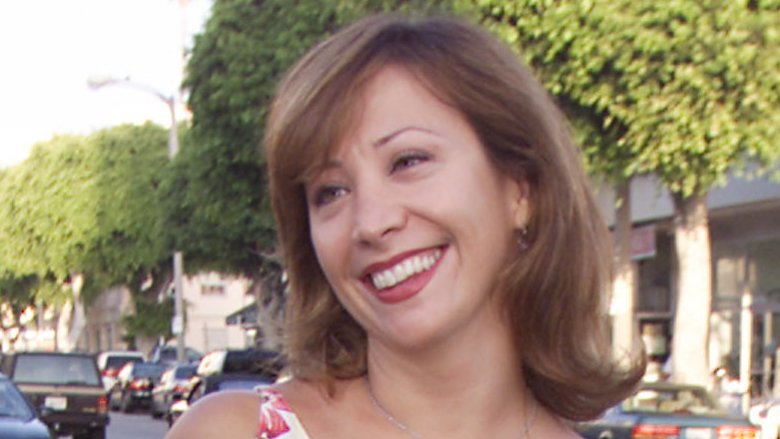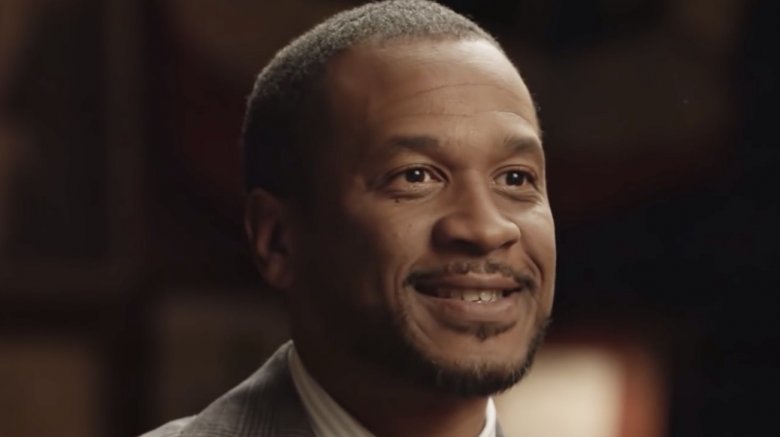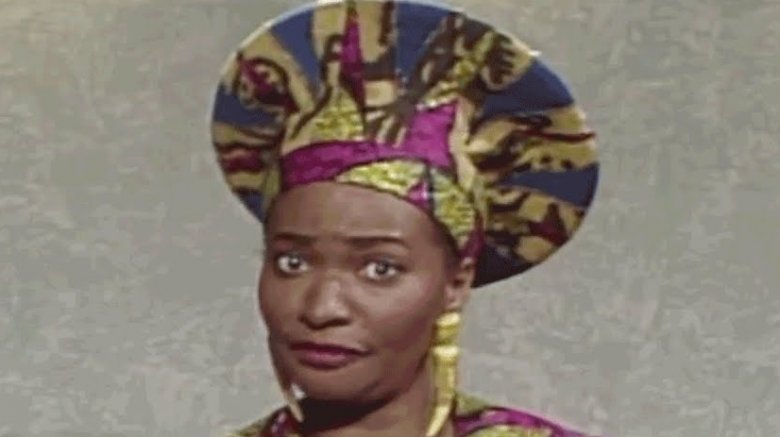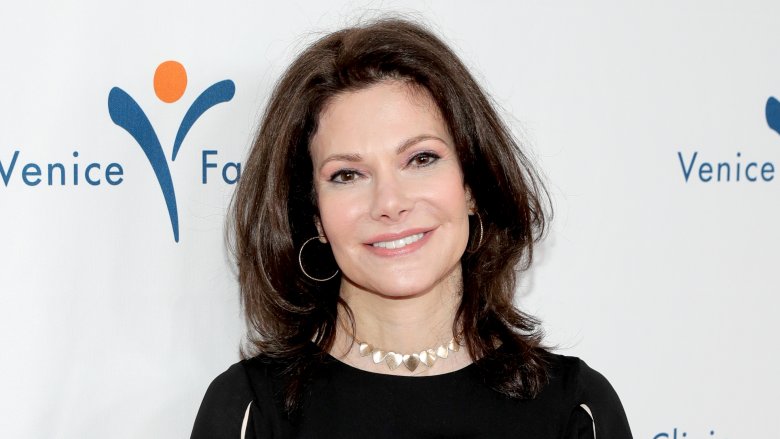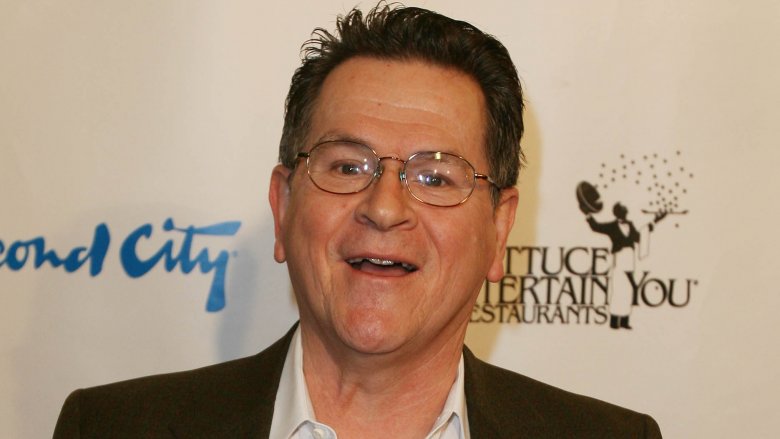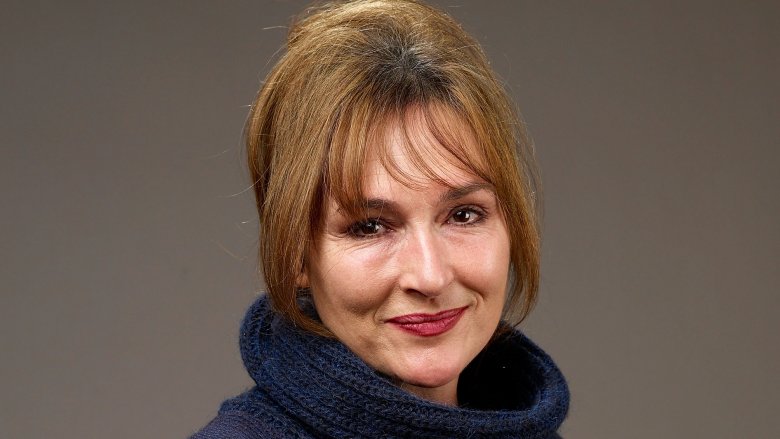SNL Stars Who Never Got Their Big Break
Making it to Saturday Night Live is a huge achievement for a comedian or actor. Since 1975, fewer than 200 people have graced the stage in Rockefeller Center on a Saturday night at 11:30 as part of the cast of the most respected and long-lasting comedy showcase in the country. It's such a spotlight that a star who shines brightly on SNL is almost guaranteed stardom in movies or TV after they leave the show. It's been a farm system that developed some of the most successful comic performers of the last four decades, including Dan Aykroyd, Eddie Murphy, Julia Louis-Dreyfus, Mike Myers, Adam Sandler, Tina Fey, Kristen Wiig, and Will Ferrell, among others.
Yet for some SNL standouts, SNL represents the biggest thing they'll ever do in show business. For whatever reason, their success on late-night comedy TV never translates to other aspects of the entertainment industry, and they never get to see their names in marquee lights. Here are some Saturday Night Live cast members that just never found the right role to land their big break.
SNL legend Darrell Hammond never got his big break
After producer Lorne Michaels let go of most of his long-standing SNL cast in 1995, he brought in a new slate of performers that included Will Ferrell, Molly Shannon, and Darrell Hammond. On a show that often includes impersonations of celebrities and political figures, it's important for SNL to have a "man of 1,000 voices" in the mix, and from 1995 to 2009, Hammond was that man. A remarkably skilled impressionist, he's probably the best mimic the show has ever had, taking a nuanced, realistic approach for his uncanny takes on Bill Clinton, Al Gore, Regis Philbin, Ted Koppel, and Donald Trump. During his time on SNL, Hammond focused not on big breakout recurring characters, but impersonating newsmakers, and he so thoroughly disappeared into those portrayals that even after 14 years in the cast, Hammond wasn't an attention-getting star. He scored a couple of bit parts in movies (Scary Movie 5) and recurring roles on TV shows (Damages, Are We There Yet?), but nothing monumental. In 2014, Hammond went back to doing what he does best, rejoining the SNL family as its announcer, taking over for the deceased Don Pardo.
Jan Hooks went from SNL to obscurity
It sure seemed like Jan Hooks did everything on SNL required of a future comedy superstar. She had recurring characters that made her memorable to audiences, including Candy Sweeney of the "Sweeney Sisters" nightclub act. She could do impressions, too, always finding just the right angle on her subjects, like a sullen Sinead O'Connor, holier-than-thou Kathie Lee Gifford, and an extraordinarily smug Diane Sawyer. She was funny, versatile, and charismatic, comparable to a latter-day SNL contemporary like Kristen Wiig, who called Hooks "one of the best there ever was" during a 2014 appearance on the show to, sadly, eulogize Hooks, who'd just passed away at age 57. Unfortunate, if not quite as sad, was how Hooks never found a role worthy of her talents after she left SNL in 1991.
A few months after her SNL departure, she joined the cast of Designing Women, replacing Jean Smart. That show was on its last legs, and couldn't survive such big cast changes, and was off the air by 1993. Apart from funny recurring roles on 3rd Rock from the Sun and 30 Rock, and voicing Apu's wife, Manjula, on The Simpsons, Hooks didn't find nearly as many good projects as she deserved.
Joe Piscopo failed to find his big break after SNL
Any SNL history or highlight reel that covers the early '80s tends to focus on Eddie Murphy and his work, like Buckwheat, Gumby, "James Brown's Hot Tub Party," and "Mr. Robinson's Neighborhood." But castmate Piscopo was almost as big of an SNL star, a notion that gets obscured by Murphy's tremendous post-SNL success and Piscopo's relative lack thereof. On the show, Piscopo performed a wide range of well-done impressions, including David Letterman, Andy Rooney of 60 Minutes, and most famously, Frank Sinatra. (Murphy and Piscopo teamed up for a famous sketch parodying the 1982 hit song "Ebony and Ivory" — Murphy did Stevie Wonder, Piscopo did Sinatra.) Piscopo and Murphy appeared on-screen together a lot — Piscopo played the Pokey to Murphy's Gumby, and they starred as Blaire and Dion, a couple of over-the-top male hairdressers in a sketch that definitely hasn't aged very well.
In 1984, the same year he left SNL, Piscopo starred in Johnny Dangerously, a sendup of 1930s gangster movies. Piscopo was well-suited to play toughs like Danny Vermin, but the film flopped at the box office. (It was trounced in its opening weekend by Murphy's Beverly Hills Cop.) Piscopo's career turned into a string of small roles in TV shows, along with a few standup specials for cable TV, an extreme interest in bodybuilding, and in 2017, floating plans to run for governor of New Jersey.
Garrett Morris' post-SNL big break never came
In 1975, Garrett Morris made TV history as one of the original Saturday Night Live cast members — or, as the group of relative unknowns was collectively known, "the Not Ready for Primetime Players." Starring on what was at the time a hip, novel, and often envelope-pushing series brought lasting fame and long careers to almost everyone in that first batch, which included Chevy Chase, John Belushi, and Jane Curtin. But why not Garrett Morris? On SNL's early years, Morris stood out for his characters, including the "Weekend Update" translator for "the hard of hearing" (he'd just repeat what the anchors said... very loudly) and baseball player Chico Escuela (who responded to most questions with "Baseball been berry berry good to me"). Morris was even the first actor to ever play Ant-Man, portraying the character in a sketch called "Superhero Party." (That explains Morris' cameo in Ant-Man.)
In the '80s, when former castmates like Bill Murray and Aykroyd dominated film comedy, Morris found occasional roles in forgettable fare like The Census Taker and The Underachievers. He then fared a little better on TV, landing a supporting role on Martin as Martin Lawrence's boss, and, at the age of 74, a gig as diner cashier Earl on the long-running 2 Broke Girls.
Paul Brittain couldn't turn SNL fame into a Hollywood big break
A bit older than the usual young and hungry twenty-something newbies in the SNL cast, Paul Brittain was 33 when he joined the show in 2010. He quickly made a name for himself with multiple (and totally original) characters: weirdo romance coach "Sex" Ed Vincent, Croatian "catchphrase" comic Goran "Funky Boy" Bogdan, and Lord Cecil Wyndemere, an immature (but actually 47-year-old) old-timey aristocrat who dances around to harpsichord music and demands "sweets." During the 2011-12 season, SNL's Lorne Michaels put Brittain on a half-season contract and opted not to renew it, making for an abrupt mid-season disappearance. Since then, Brittain has racked up scarcely more than a dozen credits, all of them small character parts. He popped up in a few Adam Sandler movies (voicing characters in a pair of Hotel Transylvania cartoons along with Grown Ups 2), and for some sketch work on Comedy Bang! Bang! and Kroll Show. Probably his most prominent work came in five episodes of the short-lived ABC sitcom Trophy Wife, and Killing Gunther, an indie comedy written and directed by his old SNL co-worker Taran Killam.
Charles Rocket's post-SNL years of disappointment
After Lorne Michaels left SNL in 1980, new producer Jean Doumanian brought in a new cast. She was arguably most excited about Charles Rocket, a leading-man type that NBC president Brandon Tartikoff once likened to a mixture of equal parts Chevy Chase and Bill Murray. While the 1980-'81 season was beset by big problems and growing pains, Rocket did provide some standout moments, particularly "The Rocket Report," a series of "man-on-the-street" filmed bits. But he's certainly best known for the time he said the F-word live over the air. With Dallas star Charlene Tilton hosting the February 21, 1981 episode, the show parodied that show's "Who Shot J.R.?" phenomenon with a mysterious gunman shooting Rocket. At the end of the show, Rocket sat in a wheelchair on stage, and Tilton asked him how it felt to be shot. "Ah, man. It's the first time I've ever been shot in my life," Rocket said. "I'd like to know who f***ing did it." That's a big FCC rule violation; Rocket soon lost his job on SNL.
Rocket subsequently put together a modest career in Hollywood, often playing jerks, yuppies, or smarmy bad guys defeated by the hero in comedies — he brought that energy to comedy classics like Earth Girls are Easy and Dumb and Dumber. He popped up in other things, too, like Hocus Pocus and a few episodes of Moonlighting, but nothing that justified his early-career comparison to Chase and Murray. Sadly, Rocket took his own life in 2005.
Cheri Oteri searched in vain for her big break after leaving SNL
SNL cleaned house and reset in the fall of 1995, bringing in new performers that injected major energy into the aging comedy institution. Among them: Cheri Oteri, a veteran of the Los Angeles-based Groundlings comedy troupe. She brought that live theater dynamic to TV with a collection of wild and zany characters such as enthusiastic Spartan cheerleader Arianna and no-guff-taking Louisiana-accented gatekeeper Nadeen ("Simma dahn nah!"), as well as her silly impressions of Barbara Walters and Debbie Reynolds. Often appearing in sketches opposite formidable co-stars like Will Ferrell and Molly Shannon, Oteri held her own, and was one of SNL's brightest stars until she left the show in 2000.
Later that year, she landed the major role of Gail Hailstorm in the hit Scream sendup Scary Movie. The part wasn't included in any of the subsequent Scary Movie films, so that wasn't the big breakthrough role it should've been for Oteri. She's gone on to star in the flop Dumb and Dumber prequel Dumb and Dumberer: When Harry Met Lloyd and took a lot of guest-star gigs and voice roles.
Jerry Minor missed the brass ring after SNL
Both before and after his too-short tenure on SNL — only the 2000-2001 season — Jerry Minor has been a part of numerous hip and innovative comedy projects and worked with plenty of comic visionaries. However, such projects lean more to the "cult classic" column than "smash hit." Prior to SNL, Minor co-starred on David Cross and Bob Odenkirk's edgy and influential sketch comedy series Mr. Show, and he was briefly a correspondent on The Daily Show. Following SNL — where he stood out for his talk show parody "Rap Street" and his "Weekend Update" appearances as Al Sharpton — Minor starred on the Comedy Central debate parody Crossballs, had a recurring role as Officer Carter on Arrested Development, and played an overburdened dad on ABC's Carpoolers, a one-season wonder created by The Kids in the Hall's Bruce McCulloch. More recently, Minor popped up on Unbreakable Kimmy Schmidt as an inept prosecutor named Chris, heavily implied to be O.J. Simpson prosecutor Christopher Darden.
Ellen Cleghorne earned a big break on SNL, but it never arrived
Ellen Cleghorne was a vital part of the Saturday Night Live cast of the early '90s, a time referred to as the "Bad Boys" era due to the dominance of bro humor sketches from the tight-knit group of Adam Sandler, Chris Farley, David Spade, and Rob Schneider. Cleghorne offered a complement to those dudes' segments with memorably daffy characters like Queen Qhenequa and Zoraida the NBC page, along with portrayals of contemporary newsmakers like Anita Hill and Surgeon General Joycelyn Elders. Cleghorne left the show of her volition in 1995, when the WB gave the comic performer her very own sitcom called Cleghorne! She played a single mom living next door to relatives; fellow SNL alum Garrett Morris played Cleghorne's uncle. Like most WB shows of that era, Cleghorne! tanked in the ratings and was canceled after just one short season. After a recurring part on the short-lived C-16 FBI in the late '90s, Cleghorne never again got a huge gig, although Sandler cast her in a supporting role in Grown Ups 2. She doesn't seem to be sweating it; the now Dr. Cleghorne went back to school and earned a Ph.D in Performance Studies at New York University's Tisch School of the Arts.
SNL vet Laura Kightlinger's big break never materialized
In recent years, Saturday Night Live producers have plucked a lot of cast members from the worlds of sketch comedy and improvisational troupes. In the early '90s, the show found success with stand-up comedians. Adam Sandler, David Spade, and Norm Macdonald, for example, went from the comedy club to SNL, as did Laura Kightlinger. Her droll, sardonic, and extremely self-deprecating material made her a constant presence on early '90s cable's many stand-up comedy shows, and in the 1994-'95 season, she landed on SNL as both a sketch performer and writer. That year's cast was so crowded that Kightlinger struggled to get both material and herself on the air (her best-known bit: imitating O.J. Simpson prosecutor Marcia Clark). After her brief stint with late-night comedy, Kightlinger returned to stand-up and landed lots of small movie and TV roles. In 2006, she emerged with gigs on two prominent shows: HBO's Lucky Louie and IFC's The Minor Accomplishments of Jackie Woodman. Kightlinger created the latter, a semi-autobiographical tale of a self-destructive struggling screenwriter. While Kightlinger still acts on occasion, she's focused her efforts elsewhere — unlike Jackie Woodman, she's a successful writer (and producer), working on Will & Grace and 2 Broke Girls.
Tim Kazurinsky couldn't turn his SNL tenure into a big break
In 1982, Eddie Murphy hosted SNL while still in the cast, filling in for his sick 48 Hours co-star Nick Nolte. He also varied the show's famous cold open-ending proclamation, changing it to "Live from New York, it's the Eddie Murphy show!" Indeed, the early '80s of SNL was "The Eddie Murphy Show," as the comedy dynamo overshadowed the solid work of many other cast members — including Tim Kazurinsky. He brought several popular characters to the show (their prominence now faded from memory), such as Dr. Jack Badofsky, a "Weekend Update" science expert who announced diseases whose names were puns; "The Iguana," a dork who was secretly an adventure junkie; and a guy who was married to a chimp in a soap opera sendup called "I Married a Monkey."
After leaving SNL in 1984, Kazurinsky hit Hollywood, which, in the mid-'80s, needed guys like him to play nerds and dweebs. Case in point: He portrayed Carl Sweetchuck in three Police Academy sequels. Also an SNL writer, Kazurinsky went on to pen scripts for movies and TV, including About Last Night..., For Keeps?, and According to Jim.
Nora Dunn's post-SNL bid for stardom fizzled out
Plenty of SNL stars go big and broad with their characters to get a reaction from the studio audience. Not Nora Dunn, who completely disappeared into her roles, more like a film actor would. Between 1985 and 1990, Dunn launched a number of major SNL characters during her time on the show, including Liz Sweeney (part of the Sweeney Sisters lounge act, with Jan Hooks), self-satisfied talk show host Pat Stevens, and maudlin French prostitute Babette.
But like Charles Rocket, arguably Dunn's most famous SNL contribution is a controversy. She publicly boycotted the second-to-last episode of the 1989-'90 season, hosted by comedian Andrew "Dice" Clay, because she found his material homophobic and abusive to women. Perhaps her tendency to be completely absorbed by a part made Dunn tend more toward character work than big flashy leading roles, as over the last 30 years, she's worked steadily with supporting roles in lots of TV shows, including The Nanny, Bones, Grace and Frankie, New Girl, and It's Always Sunny in Philadelphia.
